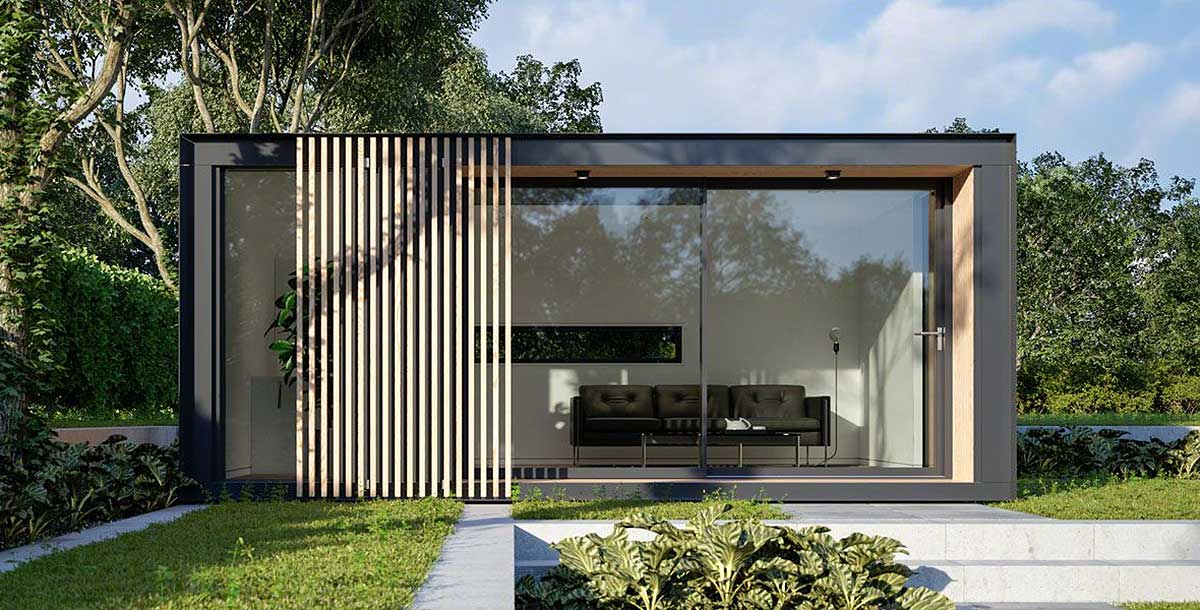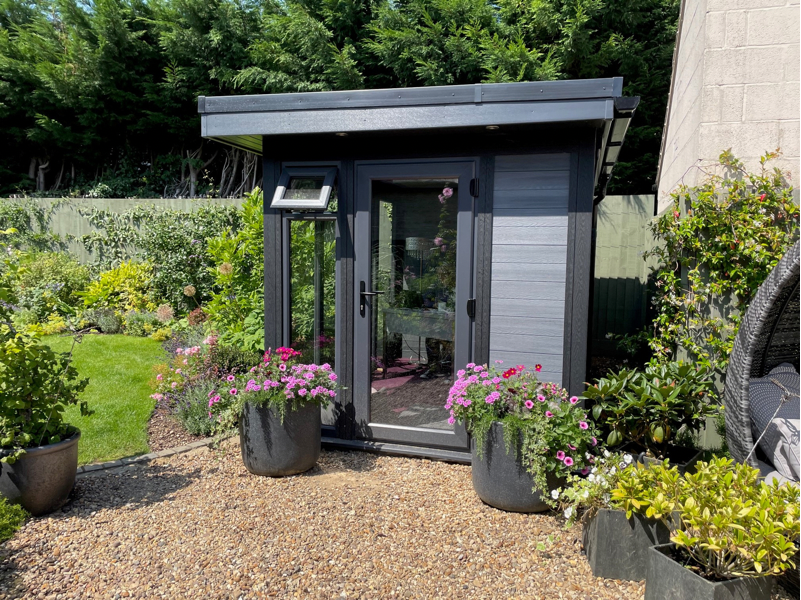New Info For Planning Permission For Garden Buildings
New Info For Planning Permission For Garden Buildings
Blog Article
What Kind Of Planning Permission Is Needed For Garden Rooms As Well As Other Structures?
Certain size limitations are typically used to determine if you require planning permission prior to making garden rooms, conservatories or outhouses. Here's a brief overview of common size-related criteria you may need to consider when seeking permission for planning.
If you plan to build a detached house then you must obtain permission if the proposed construction or any outbuildings are more than 50 percent of the entire land surrounding the original house.
Height restrictions:
Single-story structures The maximum height of the eaves should not exceed 2.5 meters. The overall height shouldn't exceed 4 meters for an eaves-pitched roof, or 3 meters for any other kind of roof.
If the building is within 2 meters of a property boundary it cannot be higher than 2.5 meters.
Floor Area:
Structures with a floor area larger than 30 square meters could need building regulations approval, even when planning permission isn't required.
Proximity to Boundaries:
If the structure is located within 2 meters from the boundary, it is required to get permission for planning for structures with a height more than 2.5 meters.
Building Use
The purpose for which you intend to use the room, even though it is not a strict restriction on its size, could influence whether or not planning permission is required. Planning permission could be required in the event that, for example the structure is designed to be used for office or residential space.
Permitted Development Rights:
Permitted Development Rights permit development rights that allow certain types of construction without a complete planning request with limitations on the size and conditions. These rights vary based on whether the property is located within a protected area or subjected to other limitations.
Conservatories or Extensions
For single-story rear extensions, the depth maximum of an extension is typically 4 metres for detached homes, and 3 metres for semidetached or terraced homes. In the Neighbour consultation plan, these depths could be raised to 8 meters or 6 meters, respectively.
The maximum height of an extended rear extension with a single story must not exceed 4 meters.
Side Extensions
For side extensions, the width cannot be greater than half the width of the home's original The height cannot exceed 4 meters.
Volume Restrictions:
In certain areas such as conservation zones, or Areas of Outstanding Natural Beauty Any construction that is greater than 10% or increases its volume by 50 cubic meter may require planning permission.
Front Extenders
Planning permission is typically required for extensions that extend beyond the front that faces the street of the original residence.
It is crucial to inquire with your local planning authority because rules can vary depending upon the local council's policies or the condition of your property. Even when planning permission isn't needed Building regulations approval may still be necessary for structural and safety motives. Read the top garden rooms near me for more examples including outhouses for garden, out house for garden, do you need planning permission for a garden room, do i need planning permission for a garden room with toilet, composite garden office, garden room conservatory, what size garden room without planning permission, garden room, what size garden room without planning permission, outhouse for garden and more.
What Height Limitations Are You Required To Adhere To When Planning Gardens?
Planning permission is often required for the construction of extensions, garden rooms outhouses, conservatories or outhouses. Height restrictions are a key aspect in determining if or whether planning permission is required. These are the primary factors that determine height you should know:
The maximum height allowed for an unattached outbuilding (or extension) that has a dual-pitched roof (such as the gable roof) is 4 meters.
The other types of roof (flat or single-pitched) cannot exceed three meters in height. ) The height of the roof should not exceed 3 meters.
Limits of proximity:
The maximum height for a structure within 2 metres of the property line cannot be to exceed 2.5 meters. This is applicable to sheds, garages, and similar structures.
Eaves Height:
The maximum height of the eaves (the height between the lowest portion of the roof and the eaves) is not to exceed 2.5 meters for any structure.
Conservatories, extensions and various types of conservatories:
For a single-story rear extension, the height cannot exceed 4 meters. This includes the parapet wall as well as the roof.
Side Extensions:
The side extensions can only be 4 meters tall and must not be wider than half of the house.
Special Roofs
Flat roof structures are usually limited to a maximum of 3 metres.
Additional Restrictions to designated areas
In conservation zones designated as protected zones, Areas of Outstanding Natural Beauty and other designated areas, there could be higher height limits and permits are required to construct structures that are otherwise allowed.
Buildings of National Parks
National Parks structures may also be subject to height restrictions, which require approval for the planning process.
Roof Design
The elevation of the top part of the roof (excluding chimneys and antennas.) It is important to consider. When the maximum point goes over permitted development limits the planning permission is needed.
Neighbours are affected as well.
Even if you're not within the permitted height the planning permit might still be needed to build an structure if it has impacted on the view, privacy, or the sunlight of neighboring properties.
Maximum Height:
A structure's height must not be more than 4 meters. For instance, a backyard office with a dual-pitched roof must not be taller than 4 meters at its tallest point.
Decking or Platforms:
To prevent the requirement for planning permission, any platforms or decks connected to the structure must not elevate the ground by more 0.3 meters.
Contact your local authority about the latest changes and rules. Even if the construction is in the permitted development rights (PDR) local modifications or conditions on the property may require approval for planning. Have a look at the top modern garden building for site recommendations including what size garden room without planning permission uk, garden buildings , out house for garden, garden room planning permission, ground screws vs concrete base, best electric heater for cabin, Tring garden rooms, composite garden office, garden rooms, how to lay decking on soil and more.
What Planning Permission Do You Need For Garden Rooms Etc In Relation To Agricultural Land?
You must consider the following restrictions and permission requirements when you are building a garden room or conservatory, an garden office, outhouse or an extension on your agricultural property. These are the most important aspects: Change of Use:
The land that is designated as agriculturally is utilized for farming and similar activities. Changing this land’s use to residential, or even for garden structures, usually requires approval from the planning department. This is because it requires a shift from its designated agricultural purpose.
Permitted Development Rights:
The land of agriculture is usually subject to different permissible limitations on development than residential land. Some agricultural buildings, for example, can be built without a planning permit. However, they tend to be for structures that are related to farming that are not garden rooms or offices for residential use.
Size and Scale
The scale and size of the proposed structure will determine whether planning permission is needed. Planning permission is more likely required for large buildings or structures that cover a large area.
Effects on use of agri-food products:
Planning permission may be required if the new construction interferes with the agricultural use of the land. This could include reducing available land for livestock or crops.
Green Belt Land:
If agricultural land is classified as Green Belt, additional restrictions are put in place to prevent urban sprawl. Planning permission is typically required for any new construction in Green Belt land.
Design and Appearance
The structure's design and its style must blend into the rural character of the region. Planning approval is needed to ensure that the new structure will not negatively affect the natural landscape or visual appeal.
Environmental Impact:
Environmental impact is an important consideration for any construction on land that is agricultural. A study of the environment may be required to obtain planning approval to ensure the new structure won't harm wildlife habitats or the local ecosystem.
Proximity to existing buildings
The closeness of the garden room or office to agricultural structures in the area could impact the requirements for planning. Structures close to farm buildings are seen differently from structures in open areas.
Access to infrastructure
The impacts on access and infrastructure, like water supply, roads, and waste management, need to be taken into consideration. Planning permission will determine whether or not current infrastructure can support the construction.
Class order is used to:
Planning law specifies the precise uses of agricultural land. Planning permission is typically required to change the usage class of a building to one that isn't under the agricultural category.
Local Planning Policies
Local planning authorities have specific guidelines for agricultural land. These policies determine whether or not planning permission for non-agricultural buildings are granted, taking local development plans and the needs of the community into account.
National Planning Policy Framework
In the UK, National Planning Policy Framework (NPPF) offers guidelines as to the best way to have land developed and utilized. The NPPF is used to evaluate the validity of planning permissions to structures that are built on land that is agricultural. It promotes sustainable rural development and safeguards them.
In the end it is clear that planning permission for garden rooms, conservatories outhouses, garden offices, outhouses or extensions to agricultural land is usually required because of the need to alter the land's usage and ensure compliance with national and local plans. It is crucial to discuss with your local authority to be aware of the particular requirements. See the recommended can i build a room in my garden for website examples including what size garden room without planning permission, garden room vs extension, outhouse building, outhouse, garden room planning permission, composite garden office, garden room, garden room conservatory, garden outhouses, garden room permitted development and more.